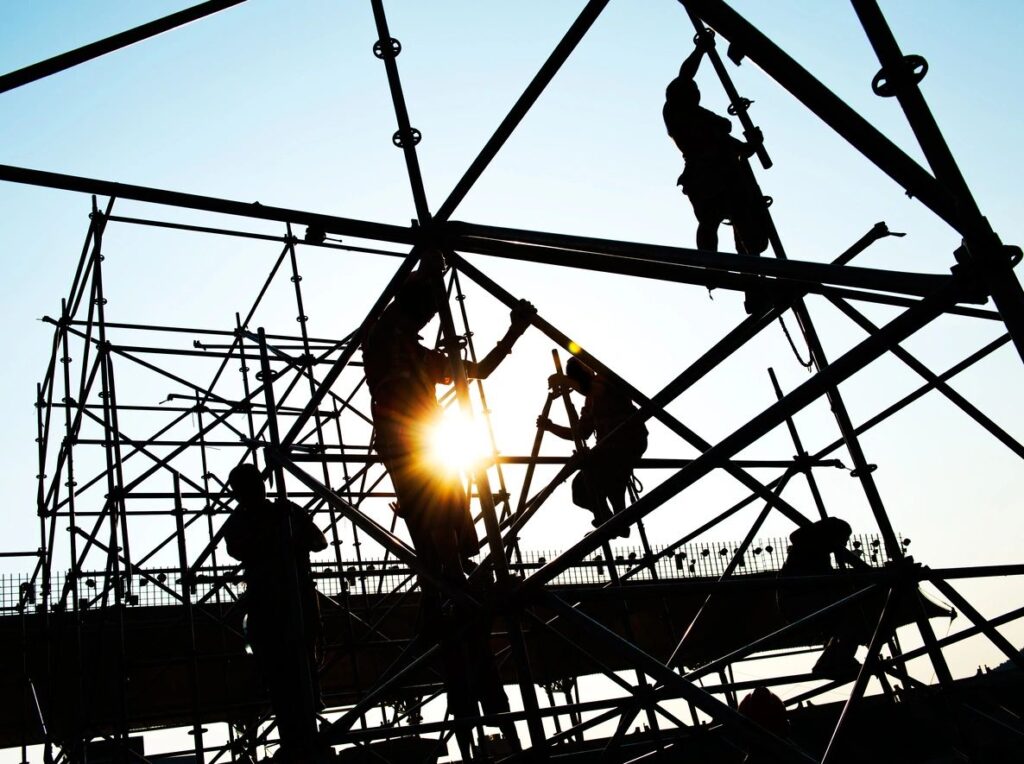The widespread power failure that struck parts of Europe on April 28th, 2025, served as a stark reminder of our reliance on stable digital infrastructure.
The fragility of essential infrastructure becomes particularly evident in an increasingly interdependent global landscape. Architectural projects often involve seamless collaboration between multiple firms across continents. Consequently, such power outages can trigger significant disruptions across various critical functions.
For architectural practices, whose workflows are increasingly digital and collaborative, understanding how these outages impact daily operations and implementing proactive mitigation strategies is crucial for maintaining productivity and project timelines.
The Impact of a Power Outage on Architectural Practice:
When the power grid fails, the consequences for architects extend beyond simply losing light. The interruption cascades through core workflows:
- Design Stagnation: Architects rely heavily on power-intensive software like CAD and BIM. A blackout immediately halts design work, cutting off access to intricate models, detailed drawings, and crucial project data. Unsaved progress risks being lost.
- Documentation Delays: Generating and accessing construction documents, vital for guiding on-site work, becomes impossible without power. This delays the preparation and distribution of essential information to contractors, potentially stalling construction progress.
- Communication Breakdown: Modern architectural projects thrive on seamless communication via email, online collaboration platforms, and project management software. Power outages sever these digital lifelines, hindering coordination with clients, consultants and contractors, leading to delays in decision-making and problem resolution.
- Impeded Site Supervision: Architects often oversee construction remotely or rely on digital communication from site. Blackouts disrupt the flow of progress updates, photographic evidence, and real-time queries, potentially delaying approvals and the resolution of on-site issues.
- Disrupted Client Engagement: Client presentations, often involving sophisticated digital models and virtual walkthroughs, become impossible without power. This can postpone critical feedback sessions and project approvals.
- Cessation of Digital Fabrication and Analysis: Practices utilizing digital fabrication tools for model making or relying on energy analysis software are directly impacted, halting prototyping and performance simulations.
- Challenges in Collaborative Projects: As highlighted by the widespread nature of the recent outage, even firms with backup power (UPS) face significant challenges when collaborating partners lose connectivity. The inability to access shared live models, receive crucial updates, or participate in real-time discussions grinds collaborative workflows to a halt, causing delays across the entire project ecosystem.

The Tangible Problems for Architectural Firms:
These disruptions translate into tangible challenges in workflow such as:
- Loss of Billable Hours and Reduced Productivity: Architects unable to work represent lost revenue and hinder project progress.
- Increased Risk of Data Corruption or Loss: Sudden shutdowns can compromise project files, necessitating time-consuming recovery efforts.
- Communication Bottlenecks and Errors: The inability to communicate effectively can lead to misunderstandings, mistakes, and strained professional relationships.
- Potential for Project Delays and Financial Penalties: Failure to meet deadlines due to unforeseen disruptions like power outages can lead to contractual penalties and impact profitability.
- Damage to Firm Reputation: Significant project delays or communication failures can negatively affect a firm’s standing within the industry, particularly if such disruptive events are not considered within their risk management framework.
Proactive Strategies for Mitigating Power Outage Impacts:
While widespread infrastructure failures are largely beyond individual control, architectural practices can implement strategies to minimize their impact:
- Implement Robust Data Management: Employ automated local and cloud-based backup systems with version control to ensure data safety and facilitate swift recovery.
- Strategic Use of Uninterruptible Power Supplies (UPS): Equip critical workstations, servers, and network equipment with UPS to provide temporary power for safe shutdown and prevent data loss during short outages.
- Establish Redundant Communication Channels: Explore backup internet options (e.g., satellite) and ensure access to mobile communication for essential coordination.
- Maintain Offline Access to Key Project Information: Keep printed or locally stored copies of critical documents and contact information accessible during outages.
- Develop Comprehensive Outage Response Plans: Create and regularly update internal protocols outlining procedures for saving work, shutting down systems, and communicating with team members and clients during power disruptions.
- Prioritize Cloud-Based Collaboration Platform Resilience: Select collaboration platforms with robust infrastructure and geographically diverse servers to minimize the risk of widespread platform outages.
- Establish Clear Communication Protocols with Collaborators: Define procedures for informing project partners about outages and coordinating alternative workflows.
Power Outages and Force Majeure in Architectural Contracts
“Force majeure clauses need to be flexible enough to cover events which are by their very definition are unforeseeable, but specific enough to prevent disputes arising.” – CIOB The Construction Wiki
Large-scale power outages, such as the recent widespread event, may constitute grounds for invoking the legal principle of force majeure, defined as an unforeseeable circumstance rendering a contracting party incapable of fulfilling its contractual obligations. However, the legal recognition of a power outage as a valid instance of force majeure is contingent upon several critical factors and can vary significantly depending on the governing jurisdiction and the specific terms of the architectural contract:
- Specificity of Contractual Language: The precise wording of the force majeure clause is paramount. Explicit inclusion of utility infrastructure failures strengthens a potential claim.
- Demonstration of Direct Causation: The firm must unequivocally demonstrate a direct causal link between the power outage and the inability to meet stipulated contractual obligations.
- Evidence of Reasonable Mitigation: Showing that the firm undertook reasonable and proactive measures to minimize the impact of foreseeable disruptions is crucial.
- Timely and Comprehensive Documentation: Meticulous record-keeping of the outage, its duration, impact, and communication is essential.
Nuances to Consider:
Legal Interpretation: Ultimately, the determination of whether a power outage qualifies as force majeure rests with legal interpretation based on the specific contract and applicable law.el to understand their rights and obligations in the event of significant infrastructure failures.
Jurisdictional Differences: Contract law and the interpretation of force majeure vary significantly between countries and legal systems.
Specificity of Contracts: Architectural contracts are not standardized; their force majeure clauses can differ widely.
Conclusion: Building a Resilient Architectural Practice:
The power outage of April 28th, 2025, underscores the critical need for architectural practices to proactively address their reliance on stable infrastructure in an increasingly interconnected global landscape.
To effectively navigate such disruptions, it is imperative that firms establish and maintain robust internal systems for immediate action, encompassing clear protocols for managing operational impacts, ensuring timely and transparent communication with all stakeholders, and meticulously documenting the event and its consequences for potential legal recourse.
Implementing robust operational redundancies, securing alternative connectivity, and establishing clear contractual protections are no longer optional but fundamental to ensuring the resilience and continuity of architectural and construction practices in an increasingly interconnected and potentially vulnerable world. Consulting with legal counsel regarding contract language and the formalization of these internal systems remains essential for comprehensive preparedness.
For Bite-Size Business Insights and Tips follow the Architects Hub on Tik Tok

Leave a Reply